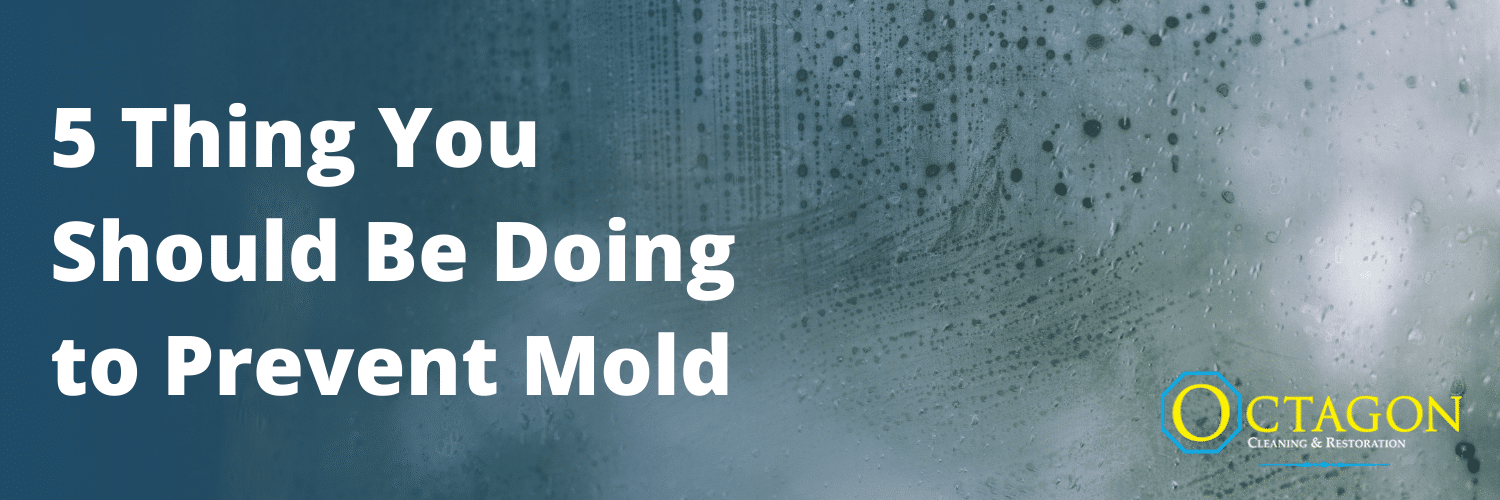
Mold can be hazardous to our health and can destroy our homes over time if left untreated. The best way to avoid mold from growing in your home is to prevent it from growing in the first place! If you have or suspect you have mold growing inside your home, we highly recommend following these 5 steps below.
How to Prevent Mold in Your Home
Control the Humidity
Some humidity inside of a home is critical in ensuring a healthy home. The Center for Disease Control recommends keeping humidity levels in your home between 30% – 50%. When the humidity drops below 30%, it can affect your health and the health of your home. These issues can include mild to severe allergies, dry skin in people and can cause wood and other building materials to shrink, leaving gaps and cracks that will need repairs. If the humidity in your home remains above 50% or higher, building materials will swell, and mold will begin growing. Install a hygrometer to find out whether you have too much or too little humidity in your home. A hygrometer is a tool that measures both indoor temperatures and humidity levels and is available at most hardware stores.
Keep Your Property Dry
Keeping your property dry is highly recommended to control mold growth. When you have active water leaks or high humidity, mold will grow rampantly. Proper maintenance and timely repairs are critical in preventing mold growth.
- Inspect plumbing, heating, and appliances regularly for leaks
- Inspect your roof for leaks focusing your attention on your chimney, vent pipes, and any other roof penetrations
- Inspect your foundation for cracks in the foundation, damage and gaskets around windows, doors, hose bibs, and any further penetration in the foundation
If you find issues with your foundation or suspect you are having problems with basement moisture, we recommend that you reach out to a basement waterproofing specialist
Ensure Good Ventilation
Good ventilation inside of a home is vital in keeping a home healthy and dry. Without good ventilation, moisture will build up within the home, creating the perfect environment to support mold growth. Humidity comes from many sources, including cooking, bathing, eating, breathing, building materials drying, etc. Proper ventilation allows the moist air to escape preventing mold from becoming an issue.
Direct Outside Moisture Away from the Property
Another way to help keep your home dry is to direct stormwater away from the foundation. Have you ever noticed water puddling around your foundation? If so, then we recommend:
- Inspect your gutters and downspouts to ensure that they are free of debris and the downspouts are directed away from the home
- Clear leaves and debris from around your foundation to preventing puddling
- Inspect your perimeter drain to ensure that it is working correctly and that there is no debris blocking the drain that will prevent the water from escaping. If you cannot test your perimeter drain, we recommend that you contact a basement waterproofing specialist.
- Step back from your home and look at the level of the ground. Does the ground slope towards your home or away? If it slopes towards your home, we recommend having your property regraded to allow the stormwater to flow away from your home.
Use Mold Resistant Products and Building Materials When Possible
If you live in an area with moisture issues and prone to flooding, you may want to consider using mold-resistant building materials. These materials include mold-resistant wood, drywall, drywall tape, paint, fiberglass insulation, sealants, etc. Although these building materials cost more than standard materials, their protection will make it worth it in the end. If you have or suspect that you have mold growth inside your home, we recommend reaching out to a certified company in indoor air quality and licensed to perform mold remediation to get rid of the mold and make sure it does not come back.

